If you're looking for an elevated version of comfort food that's simple to make, this gluten-free brie mac and cheese recipe is definitely it. Instead of a traditional bread crumb topping, the herbs and lemon zest are the star ingredients that make this recipe next level.
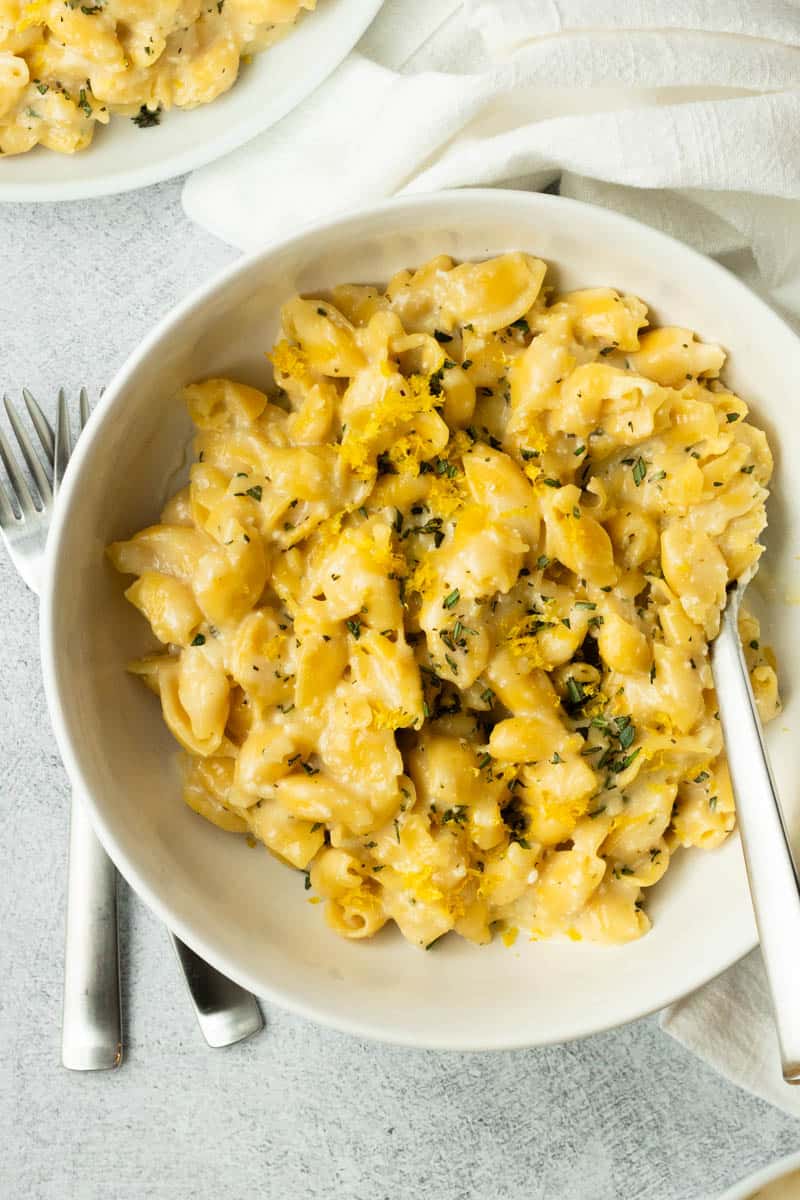
Best of all, it only takes 20 minutes to make this recipe, using one pot on the stovetop and no baking. Enjoy this recipe as a main dish for an easy weeknight meal, a side dish, or even a special Thanksgiving addition that adults and kids will appreciate!
Jump to:
What Are the Key Nutritional Benefits of This Recipe?
Nutritional Benefits of Brie Cheese
While brie cheese should be eaten in moderation due to its high-fat content, it is also rich in protein, vitamins, and minerals.
Here are a few nutritional highlights:
- The protein in brie cheese contains the 9 essential amino acids that your body cannot produce on its own. Type type of protein in brie is also easily absorbed by your body and helps to build muscle.
- Vitamin B12 can boost your energy and mood if you are not getting enough of it in your overall diet.
- Vitamin A can help strengthen your immune system.
- Calcium can increase your bone strength.
To learn more, here's a good resource about brie cheese nutrition facts and health benefits.
Nutritional Benefits of Chickpea Pasta
While chickpea pasta is high in carbs, it is a complex carbohydrate, which converts to sugar in your bloodstream more slowly than traditional high-glycemic pasta made with refined flour.
Chickpea flour also contains several other nutritional benefits:
- Resistant starch adds beneficial bacteria to your gut, which can protect your body from chronic disease.
- Folate promotes healthy cell growth and function.
- Protein helps supplement your overall protein intake.
- Fiber promotes healthy digestion
Compared to wheat flour, chickpea flour has more protein, fiber, and vitamins. It is also high in minerals that are important for several functions. Here's a good reference on chickpea pasta nutrition facts.
Ingredients

For the Cheese Sauce
- Brie cheese - this recipe calls for double-cream brie but you can also use triple-cream. Either works well to create a smooth and creamy cheese sauce.
- Fresh rosemary and fresh thyme - fresh organic herbs have a more pronounced flavor than dried herbs.
- Onion powder - I prefer using onion powder over fresh chopped onion for a more subtle flavor.
- Garlic powder - you can also use 1 garlic clove if you prefer a stronger garlic flavor.
- Lemon rind - lemon rind adds a fragrant bright flavor that rounds out the taste of herbs. Just be sure to use an organic lemon to avoid exposure to pesticides.
- Olive oil - this will add additional flavor to your cheese sauce that goes well with herbal flavors. It will also make the sauce smooth when blended.
- Whole milk - adding a little whole milk will loosen up the sauce to create the right consistency for combining with cooked pasta. You can also use heavy cream if you have some handy.
For the Pasta
- Chickpea pasta shells - this is one of my favorite pasta shapes as shell pasta collects more cheese in each satisfying bite. You can also use fusilli, penne, or elbow macaroni pasta if you prefer.
- Salt (optional) - in this recipe, the salt is added to the pasta water when it's boiling to evenly flavor the pasta shells.
How to Make a Creamy Brie Mac and Cheese
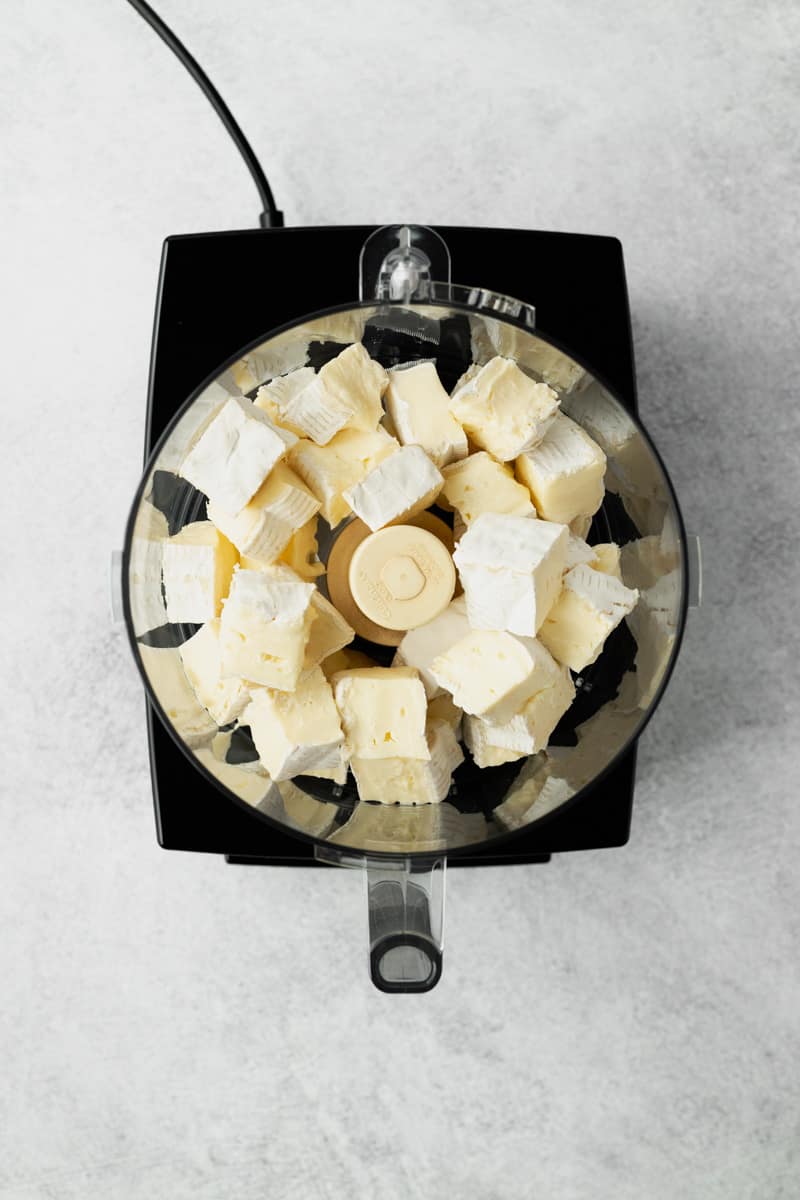
Using a sharp knife, cube the brie cheese and add it to a food processor. There is no need to remove the rind as it is edible and adds an interesting texture and flavor.
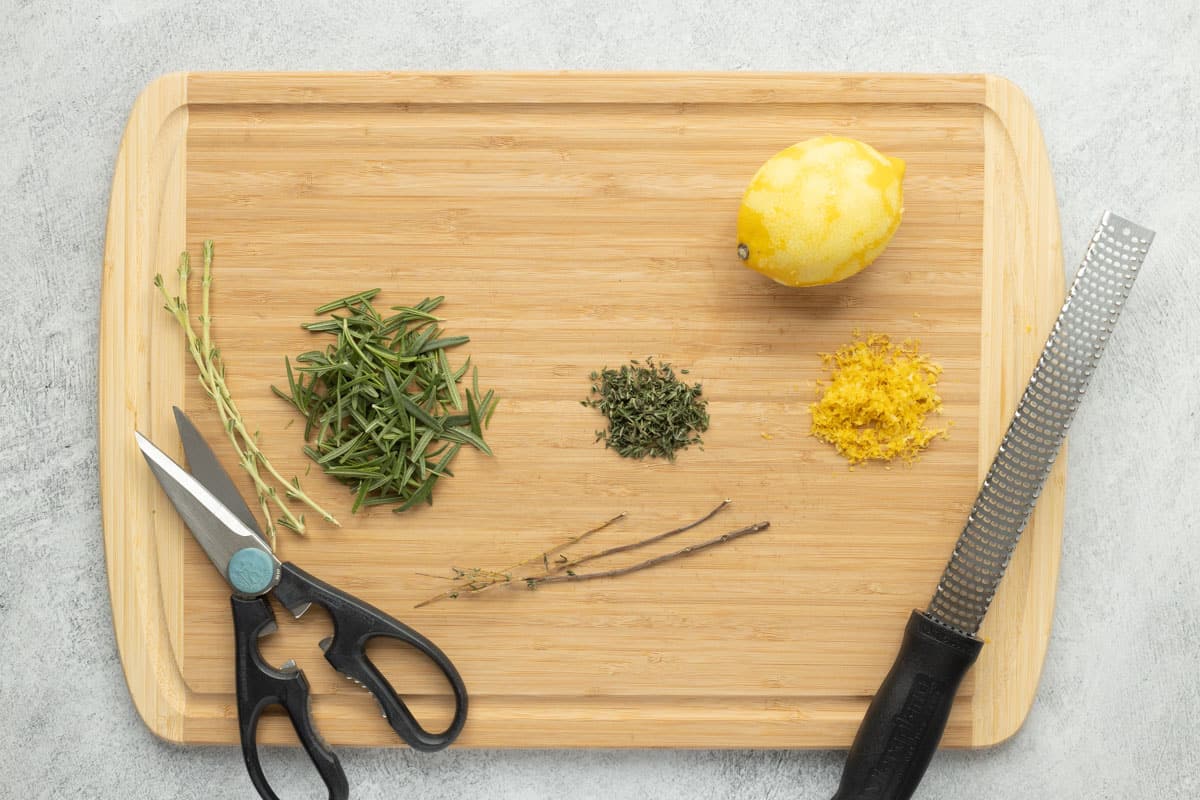
Remove the stem from the herbs and zest the lemon.

Add the cheese sauce ingredients to the food processor. For best results, let the ingredients sit for a few minutes so everything warms to room temperature before blending.

Blend until smooth. Don't worry if the sauce starts to ball up, as this can happen if the cheese is still cold. The blended ingredients will melt into a creamy brie cheese sauce when added to warm cooked pasta.

Bring a large pot of water to a boil and then add a teaspoon of salt if desired. Add the pasta shells and cook until al dente. Skim off any starchy foam that forms.

Pour the pasta into a strainer and make sure there is no water remaining in the pot.
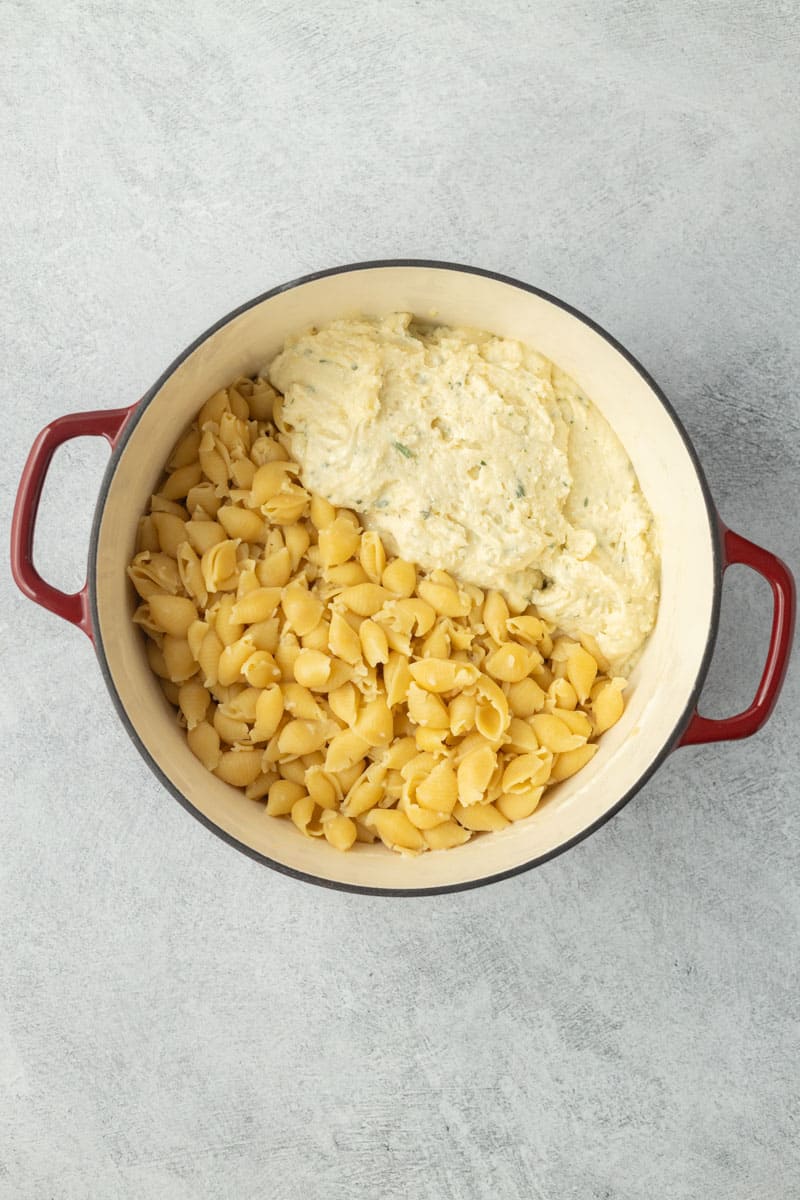
Return the pasta to the warm pot and add the cheese sauce.

Immediately stir in the brie cheese sauce until it melts into a creamy texture and is well combined with the pasta. Garnish with some extra herbs and lemon zest if desired.
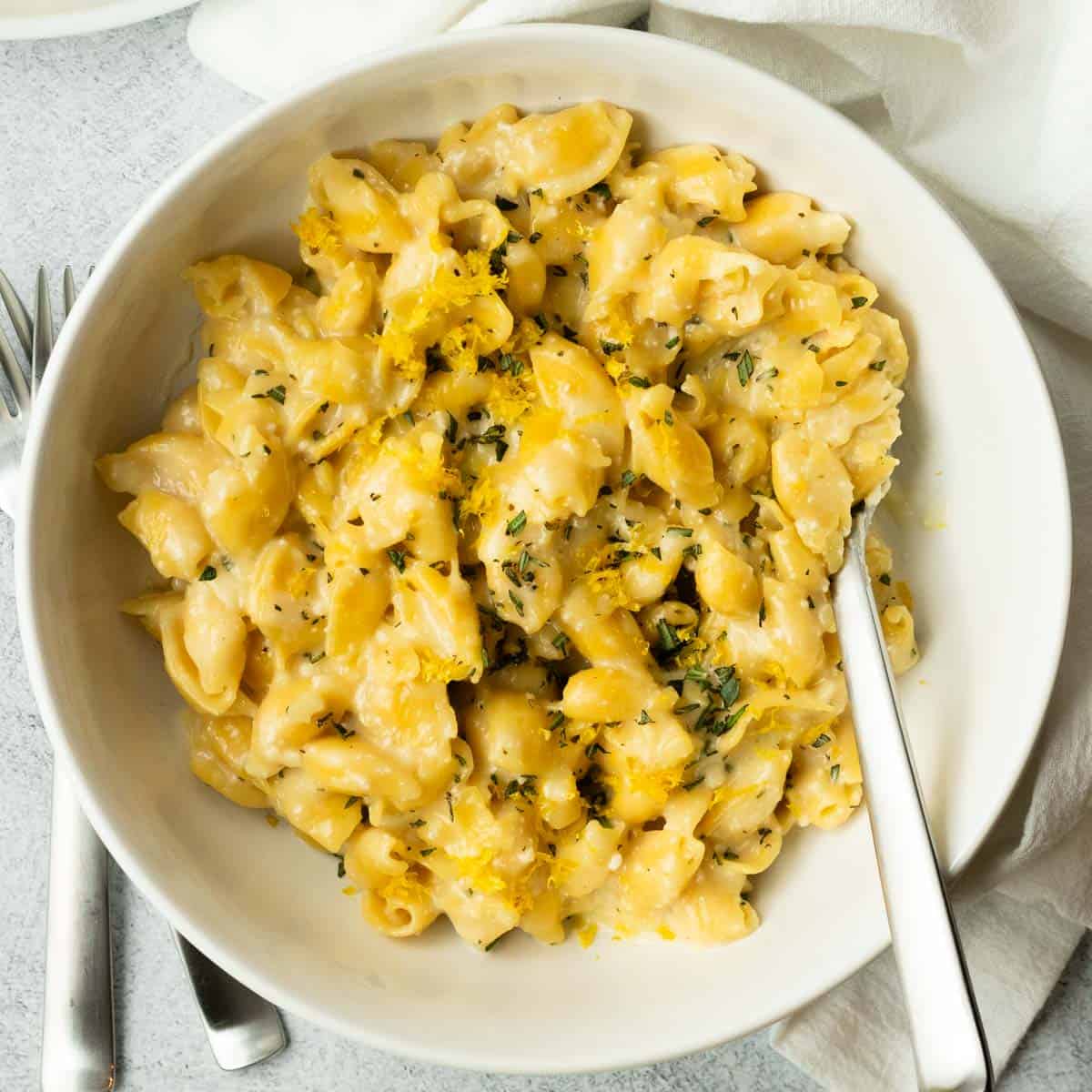
Variations
For variety, try adding any of these options to the finished dish:
- Cherry tomatoes - add about a cup of halved or quartered cherry tomatoes. This adds a sweetness that pairs very well with the flavor of brie cheese.
- Proscuitto - add 4 ounces of chopped prosciutto for a salty ham flavor.
- Crispy bacon - sprinkle chopped bacon on top for a crunchy texture and salty flavor.
- If you happen to have some gluten-free bread crumbs, melt some unsalted butter in a medium saucepan and toast the breadcrumbs before adding them to the top of your finished mac and cheese.
More options for the cheese sauce:
- If you love mustard, try adding a teaspoon of brown mustard or Dijon mustard to the food processor before blending.
- If you would like to add more types of cheese, try adding some parmesan cheese or shredded sharp cheddar cheese to the top of the mac and cheese dish. You can broil the mac and cheese for a few minutes in the oven if you want to add a golden brown color to it. Don't forget to switch to a baking dish if your pot is not oven-safe.
- If you like spicy food, stir in some red pepper flakes while combining the cheese sauce with the pasta. Alternatively, add some fresh cracked black pepper or cayenne pepper to the food processor before blending.
If you enjoy making cheese sauce that does not involve the stovetop, try making classic mac and cheese with elbow pasta using my Easy Flourless Cheese Sauce.
Equipment
I use a 14-cup Cuisinart food processor for blending the cheese sauce. It is a great general-purpose food processor that works well for a variety of recipes.
Storage
You can store leftovers in the refrigerator using an airtight container for up to 5 days. When reheating in the microwave, the sauce should become smooth and creamy on its own. If not, add a teaspoon of milk or water to loosen the sauce.
Top tips
- Before you begin, it is best to let the brie cheese warm to room temperature. If you forget to do this, don't worry. It will still turn out fine.
- Cook the chickpea pea pasta shells for a minute or two less than the minimum cooking time specified in the package directions. Chickpea pasta tends to get too soft if cooked longer.
FAQ
You do not need to remove the white rind from brie cheese before consuming. In fact, it's meant to be eaten!
The rind is made from editable white mold powder used to ripen the cheese. Its flavor and texture complement the creamy inside of brie cheese. If you see any brown or green spots on the white rind, then it should not be eaten.
The purpose of adding salt to pasta water is to season the pasta that is being cooked. About a quarter of the salt added to the water gets absorbed by the pasta. This step is not necessary as it's based on your personal preference on how salty you like your pasta.
Related
Recipe
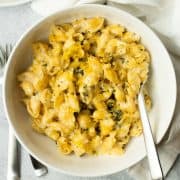
Best Brie Mac and Cheese with Herbs (Gluten-Free)
INGREDIENTS
FOR THE CHEESE SAUCE
- 16 ounces brie cheese, cubed room temperature cheese is best
- 2 sprigs fresh rosemary about 2 tablespoons chopped
- 1 tablespoon fresh thyme leaves
- 1 tablespoon lemon zest from one large lemon
- 1 teaspoon onion powder
- ¼ teaspoon garlic powder
- ¼ cup whole milk
- 2 tablespoons olive oil
FOR THE PASTA SHELLS
- 1 teaspoon salt optional, added to boiling water
- 16 ounces chickpea pasta shells
INSTRUCTIONS
- Using a sharp knife, cube the brie cheese and add it to a food processor.
- Add the remaining cheese sauce ingredients, then blend until smooth.
- Bring a large pot of water to a boil and then add a teaspoon of salt if desired. Add the pasta shells and cook until al dente, about 1 minute less than the minimum time on the package instructions.
- Pour the pasta into a strainer and make sure there is no water remaining in the pot. Return the pasta to the warm pot and add the cheese sauce.
- Immediately stir in the brie cheese sauce until it melts into a creamy texture and is well combined with the pasta.
- If desired, garnish with some extra herbs and lemon zest before serving.
NOTES
Tip
- Before you begin, it is best to let the brie cheese warm to room temperature. If you forget to do this, don't worry. It will still turn out fine.
For variety, try adding any of these options to the finished dish:
- Cherry tomatoes - add about a cup of halved or quartered cherry tomatoes. This adds a sweetness that pairs very well with the flavor of brie cheese.
- Proscuitto - add 4 ounces of chopped prosciutto for a salty ham flavor.Crispy bacon - sprinkle chopped bacon on top for a crunchy texture and salty flavor.
- If you happen to have some gluten-free bread crumbs, melt some unsalted butter in a medium saucepan and toast the breadcrumbs before adding them to the top of your finished mac and cheese.
More options for the cheese sauce:
- If you love mustard, try adding a teaspoon of brown mustard or Dijon mustard to the food processor before blending.
- If you would like to add more types of cheese, try adding some parmesan cheese or shredded sharp cheddar cheese to the top of the mac and cheese dish. You can broil the mac and cheese for a few minutes in the oven if you want to add a golden brown color to it. Don't forget to switch to a baking dish if your pot is not oven-safe.
- If you like spicy food, stir in some red pepper flakes while combining the cheese sauce with the pasta. Alternatively, add some fresh cracked black pepper or cayenne pepper to the food processor before blending.

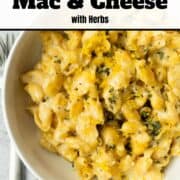
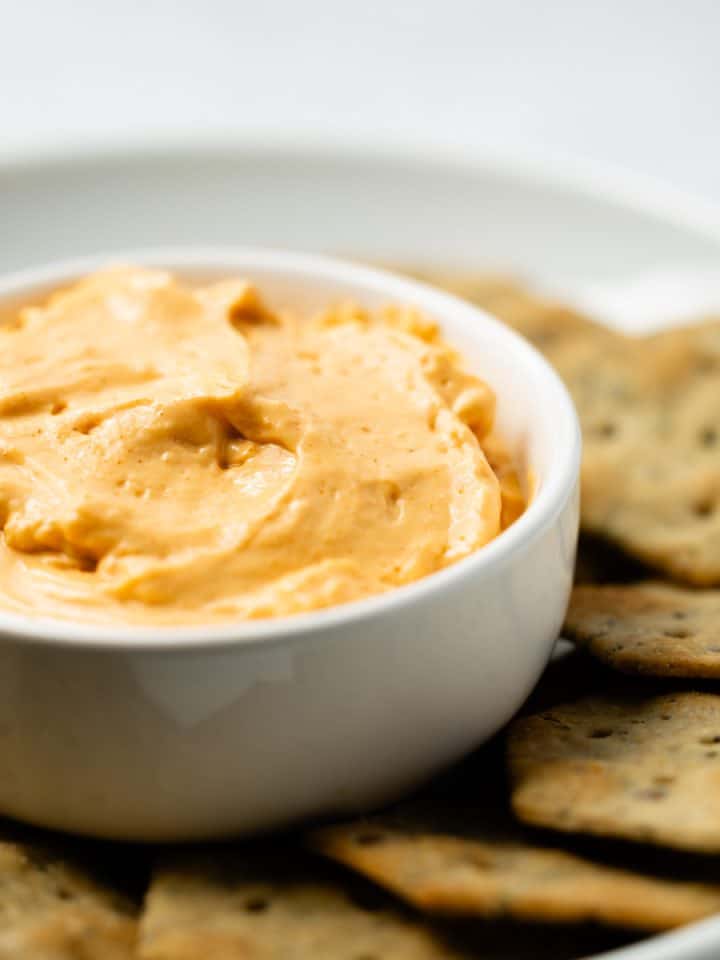
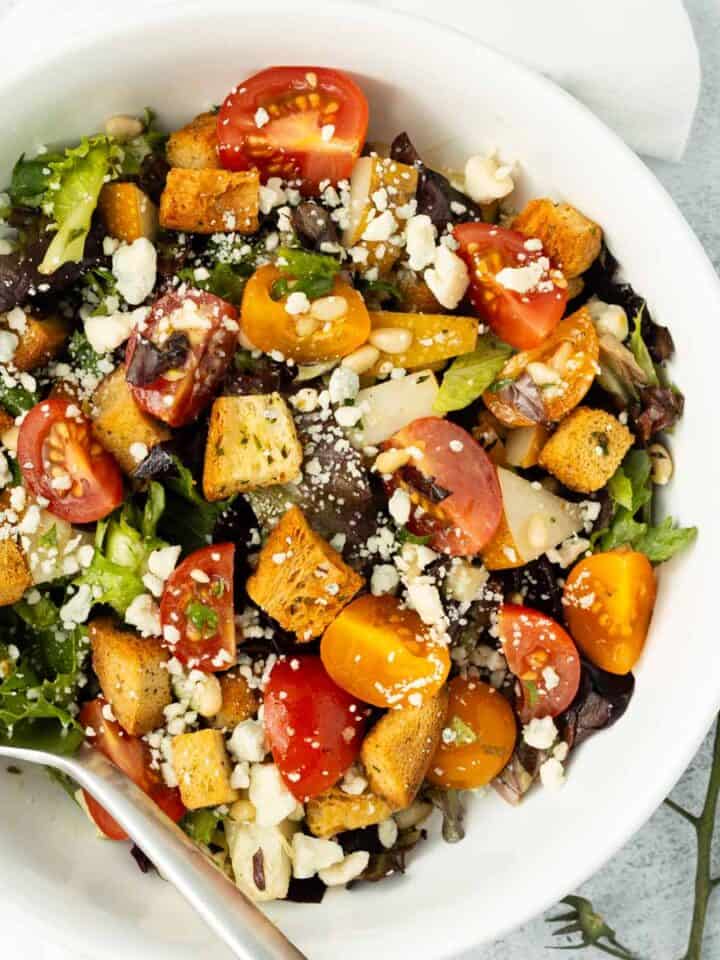
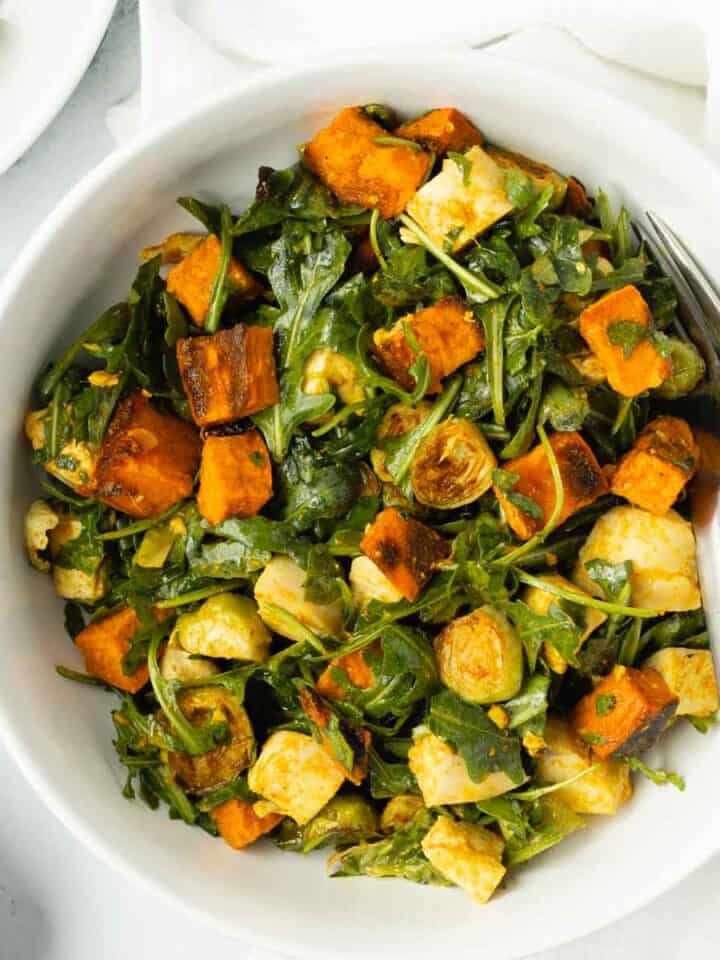


Leave a Comment